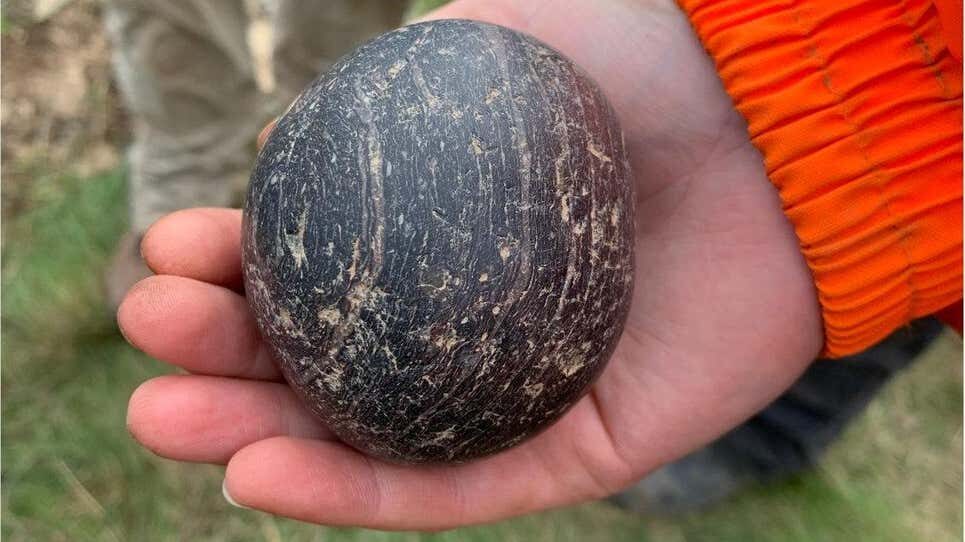Two carved stone balls have been discovered buried in an ancient Orkney tomb that is being lost to the sea.

© Mike Lawlor/Tresness Chambered Tomb Excavation 2021
Two stone balls are among finds made at the site.
The objects are unique to Scotland and, although many theories exist as to their purpose, it is believed they were used as weapons - and perhaps thrown at people's heads - during the Neolithic in Orkney.
Just over 500 carved stone balls have been found in Scotland in total, mainly in Orkney and the North East, with only a small number found in burial sites.
Dr Hugo Anderson-Whymark, senior curator of prehistory (palaeolithic - neolithic), at National Museum of Scotland, is on site.
On discovery of the first ball, he wrote on social media: "A cracking find from the tomb! Only 20 or so Neolithic polished stone balls have been found in Orkney and few have been recovered from secure contexts."
He described the second object as the "size of a cricket ball, perfectly spherical and beautifully finished".
Dr Whymark-Anderson added: "It's split along bedding in the banded sandstone, but will be amazing when conserved."
Carved stone balls were symbols of power and were probably used, along with perhaps maces, to inflict blunt force trauma to the head. One skull from the Cuween passage tomb on Orkney shows signs of such injury.
Two similar cases were also found by Dr Dave Lawrence at the Rowiegar chambered cairn on the island. At Tomb of the Eagles at Isbister, he found that both males and females, young and old, were harmed in this way.
The tomb at Tresness is a stalled cairn where the burial space is split into several compartments.
Professor Vicki Cummings, reader in archaeology at the University of Central Lancashire, said the tomb at Tresness was likely linked to the remains of a Neolithic settlement at Cata Sands. It sits around a mile-and-a-half away and is also suffering the effects of coastal erosion.
Prof Cummings said: "We have got the tomb and the settlement where people are living and they are more or less contemporary, so it seems very likely that the people building this monument were the people living at the settlement at Cata Sands.
"The landscape is quite different to what it was in the early Neolithic. Sea levels are little higher now so the coast would have been further away.
"So while at the moment this site is eroding into the sea, it would not have been in this position in the early Neolithic.
"It would still have been a coastal site, but it would have been on a headland looking out to sea.
"The other key thing that is missing is trees. It would have been a wooded environment in the early Neolithic."
Prof Cummings said an excavation was last carried out at Tresness in the 1980s, with scientific advances in archaeology making it necessary to return to the site and retrieve information before it disappears.
She said: "At the end of the day, sadly this is a site that is disappearing into the sea so we are extracting this information before it is basically lost forever."

Reader Comments
*No, I'm not HVAC.
(I see POG has the same ideas.)
R.C.
Fishing nets.
I'm now considering early golf on the links..?
And I thought of that too...